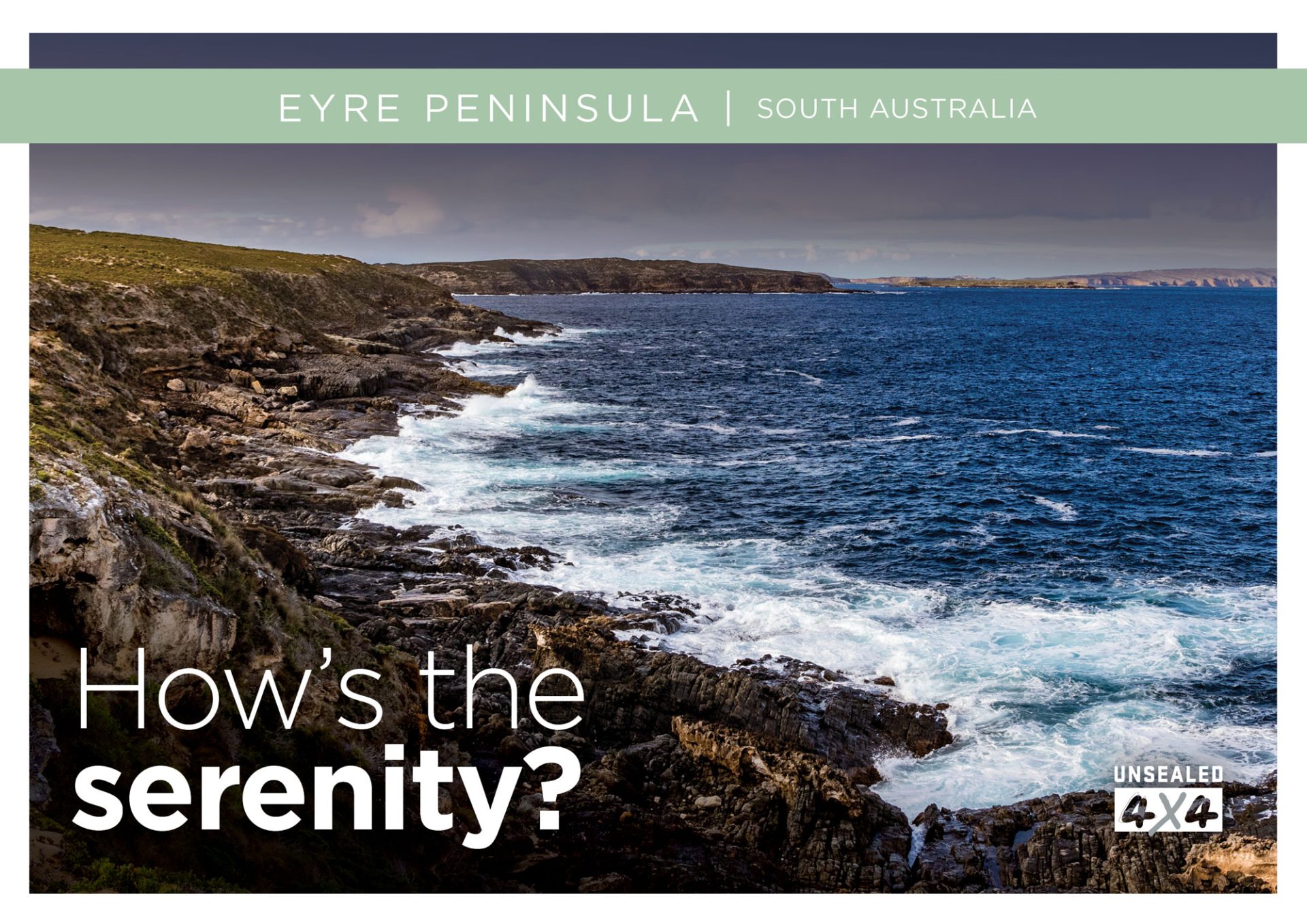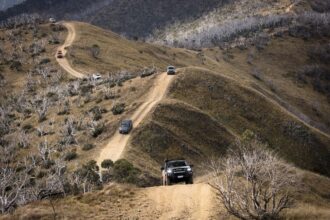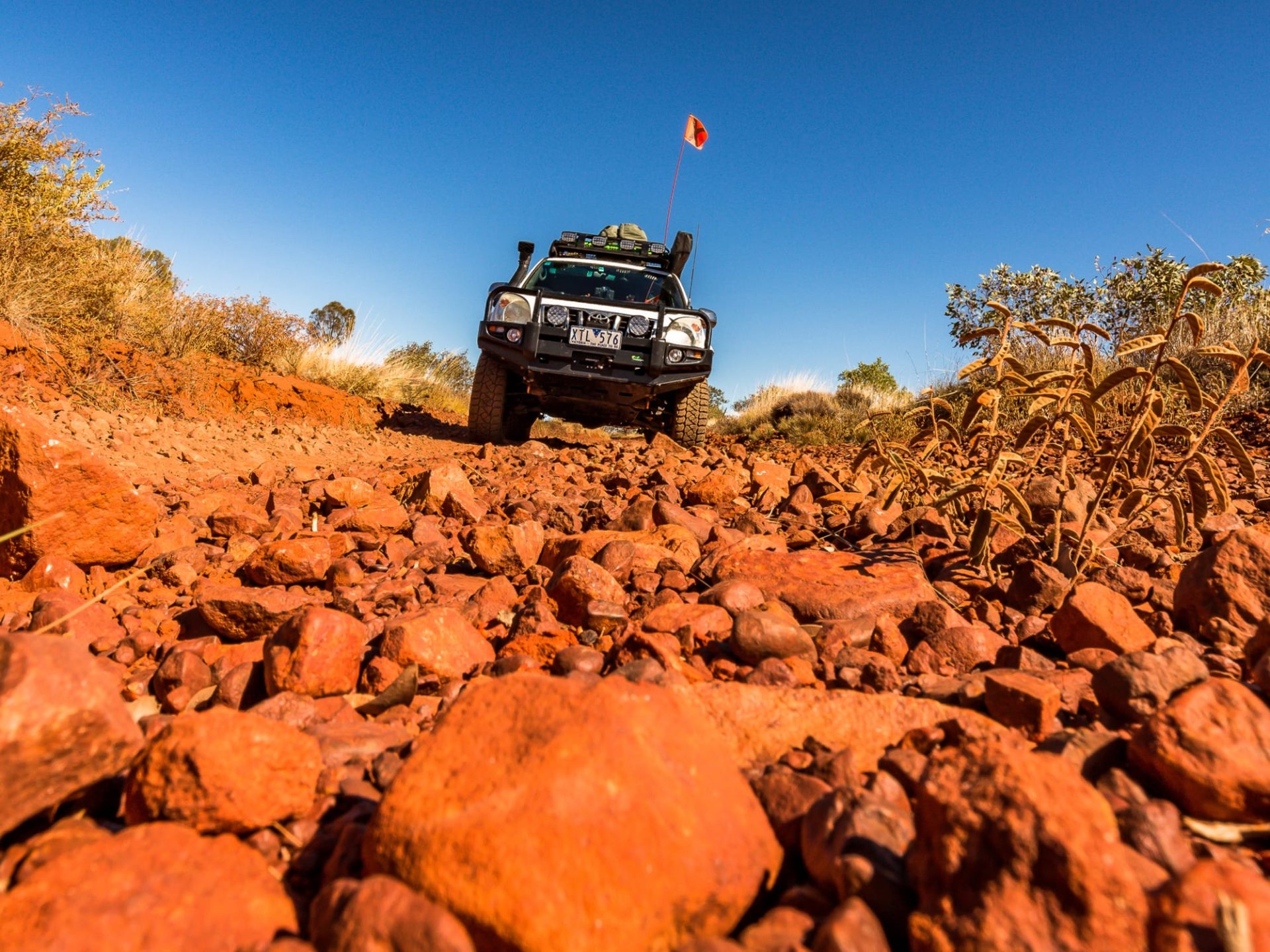WHY THE EYRE PENINSULA IS ONE OF THE MOST UNDERRATED ESCAPES FROM THE RAT RACE
The Eyre Peninsula is a popular stopover on the way west for many travellers but this spectacular region is well worth an extended stay to explore the area. With some pre-planning you can access and stay in one of the most picturesque areas of southern Australia, and take your 4WD through some great sand dunes along the coast as well. Read on to discover some of the secrets of this region.
Port Augusta is the gateway to the west and the Eyre Peninsula, and is also the last major centre before heading west. Top up your fuel tanks, grab any food or beverage supplies needed, and then head west towards the Eyre Peninsula.
Port Augusta has a few caravan parks to choose from, but a better option when heading for the Eyre Peninsula is to have a night on the coast in the Fitzgerald Bay area just north of Whyalla. Here the camps are free, fires are allowed (outside fire restriction times), and you will most likely get a campsite all to yourself.
Heading down the eastern coast of the Eyre Peninsula there are a number of caravan and camping spots such as Arno Bay and Port Neill that are worth spending a night at, especially if you enjoy a fish. Next is Port Lincoln – the major centre of the Eyre Peninsula.
Port Lincoln is the place to replenish your stocks with plenty of supermarkets and fuel outlets to choose from, as well as all the major stores you would expect in a regional city. The Port Lincoln Tourist Information Centre has all the relevant brochures and information about the nearby National Parks including Lincoln, so this should definitely be your first port of call. Here you pick up your key to access the Memory Cove area that was organised prior to coming down this way.
A good tip when planning a trip to this area is to pre-book your stay in Memory Cove and add on a few days at the beginning or end within the Lincoln National Park. This way you only have to pay for one park entry and thus you can maximise your time (and save some money).
The entrance to Lincoln National Park is only 11km south of Port Lincoln, so it’s not long until you’re away from civilisation and into the bush. Lincoln National Park has more than 10 designated camping areas within the National Park, most with toilets and fire rings. If travelling outside the fire danger period (1 November to 15 April) make sure you bring some wood and choose one of the campsites that allow fires such as September Beach. An evening around the campfire is a great way to finish a day. Some campgrounds (such as Surfleet and Memory Cove) have a year-round ban on fires – so make sure the gas cooker is also right to go.
To gain your bearings and take in the scenery, a short hike up Stamford Hill to the Flinders Monument is worthwhile. There are spectacular views across Boston Bay, Port Lincoln and Lincoln National Park. The monument commemorates Matthew Flinders’ voyage of discovery to this area in 1802. Flinders himself climbed Stamford Hill and named the area Port Lincoln after his native province in England. There are other walks heading off from here. There are more than 20 designated walks in the Lincoln National Park, which are detailed in a brochure available from the Port Lincoln Visitors Centre.
Cape Donington is the most northern section of Lincoln National Park, and there are great coastline views from here. There’s a lighthouse at the point, with the sheltered campsites at September Beach just around the corner. This campground with its fantastic beach and sheltered campsites with fire pits makes it one of the better camping areas in the Lincoln NP. Make sure you choose one of the sites bordering the beach – we stayed at Campsite 8 which was great.
Within the Lincoln National Park is the Memory Cove Wilderness Area. Unlike wilderness protection areas in the eastern States, Memory Cove is open to four-wheel drivers and visitors are actively encouraged. It takes a little bit of planning and organising to gain access to this area, and this was a major highlight of the trip for us.
The access gate to Memory Cove Wilderness Area is about 20km from the park entrance, and it’s 4WD access only from here. From the gate the Memory Cove camping area is 19km, with plenty to see on the way in. Going straight to Memory Cove will take about an hour; longer if you stop for photos or take a few of the side-tracks on the way in. It took us nearly three hours to drive in!
The drive into Memory Cove covers a range of different vegetation. It starts with a fairly dense mix of eucalypt and sheoak woodland consisting of coastal white mallee, tea-tree, and sheoak. It quickly changes to rugged granite and limestone headlands, then more tea-tree and mallee sections.
Early into the drive we came to a clifftop section that offered great views out to the nearby islands and rugged coast below. The track then heads inland to an open plain where we saw emus and kangaroos. This area has a farming history: It was grazed and cropped from 1840 until 1957 as part of the West Point Lease. Stock were watered from springs and soaks near the granite outcrops and along the clifftops. The flats were ploughed by teams of bullocks, and harvests of barley were bagged and shipped out from Memory Cove. The last barley was shipped out in 1912 prior to a bushfire that devastated the area.
Further into the drive another side-track leads off to a great clifftop view. The open ocean swells crash on the rocks below, sending salt spray into the air. Just prior to heading down into Memory Cove, there’s a scenic lookout that provides spectacular views to Cape Catastrophe, Thistle Island and the bay below. The lookout is known locally as ‘Ivy’s Leap’ after a local tour operator’s vehicle plunged off the cliff here when the handbrake failed. Fortunately no-one was in the car at the time.
Memory Cove is a shady and sheltered campground just back from the beach. Our campsite had its own track leading the few metres to the brilliant white sands of Memory Cove. Vivid crystal clear blue waters make up the spectacular scene – what a fantastic place! You can fish right off the beach here and we managed to catch a nice feed of salmon one afternoon.
The campground has male and female pit toilets that were clean and smell-free. There was also a small rainwater tank but don’t rely on this; bring in sufficient water for your stay. The park contains a variety of wildlife. We saw several western grey kangaroos on the way in, along with emus and a few large seabirds, some pretty wrens and fantails, along with pelicans and seals that were keen to check us out. A couple of kangaroos that were obviously used to being fed regularly frequented our campsite.
There is a marked walking track at the right-hand end of the beach that leads to the ocean coastline. This is a great place to watch the passing boats, look out to the nearby islands, and throw in a line for a feed of fish. About halfway along this track, mobile phone service is possible.
Memory Cove is a great place to relax and unwind for several days. We spent three fantastic days here and really enjoyed our time. With such a spectacular location and limited camping spots and access, it is a definite ‘must-do’ when in the area.
Another major highlight of a trip to Lincoln National Park is the scenery and 4WDing along the Sleaford Bay coastline. Massive wind-sculpted sand dunes, pounding surf and spectacular limestone cliffs await visitors to this area. You can pick up a guide to this track from the Port Lincoln Visitors Centre. The Sleaford-Wanna 4WD track is only about 14km long, but there’s a lot to take in and plenty of side-tracks to explore. The track can be traversed in a few hours, or a whole day could be easily spent having fun in the dunes and on the beach. The scenery along this track is just spectacular! There are several good fishing areas along the beach, including Miller Hole and Salmon Hole.
There are markers and signs along the track to guide the way, but still plenty of track options at times. Like other 4WD tracks, there are hard routes along with easier routes to choose.
The track contains a range of conditions – from soft dunes, tight sections through vegetation, to slow rocky treks over limestone sections. The ever-changing conditions and scenery add to the appeal for the area. You’re never sure what is coming up next. There are several beach access points, so if the tide is right a run along the beach could be in order. The access points do vary in difficulty… so checking before venturing onto the beach may save a tricky recovery when exiting the beach.
Quite a lot of the Sleaford-Wanna Dunes track consists of narrow sections and vehicles may be coming the other way, so caution is needed. A sand flag is a good idea to advertise your presence – much easier to spot (and be spotted) in the narrow parts and when cresting dunes.
The Lincoln National Park has plenty to offer the avid camper and 4WDer. The Eyre Peninsula has many attractions including Lincoln National Park, Memory Cove and the nearby Coffin Bay National Park. Even though the Eyre Peninsula is a long way away for most of us, it’s well worth the effort and you will not be disappointed.
Destination Details:
Eyre Peninsula is famous as a coastal getaway without the coastal crowds. With over 2,000km of coastline, there are plenty of options to find a quiet section with few other visitors. Lincoln National Park is 11km from Port Lincoln on the Eyre Peninsula. The Sleaford-Wanna Dunes track is located within the Lincoln National Park. Memory Cove Wilderness Area is also within the National Park and is 20km from the entrance to Lincoln National Park. When planning a visit to this area, make sure you book a stay at Memory Cove. This can be done by ringing the Port Lincoln Visitors Centre. Port Lincoln is 647km from Adelaide via Port Augusta.
CONTACTS & INFORMATION:
Port Lincoln Visitors Centre
National Parks South Australia
WHAT TO TAKE:
Basic spares and recovery equipment, along with sufficient food and beverages for the period planned in the park. The best place to stock up is Port Lincoln, which is the main centre on the Eyre Peninsula. Port Lincoln hosts all the major supermarkets, 4WD suppliers, fuel outlets and mechanical services.
TRIP STANDARD: The access tracks within the Lincoln National Park are sealed roads and well maintained gravel roads suitable for all vehicles. Access to Memory Cove is restricted to high-clearance 4WDs, but the track is quite easy. The Sleaford-Wanna Dunes track has plenty of soft sand so it’s definitely 4WD territory with low tyre pressures essential.
RESTRICTIONS & PERMITS: A National Parks pass is required to enter Lincoln National Park. The cost is $11 per vehicle for park entry, plus $12 per vehicle per day to camp. Unfortunately South Australia has gone down the online booking path so all booking needs to be done ahead of time, online.
A key and pass from the Port Lincoln Visitors Centre are required to access the Memory Cove area. Visitors are limited to 15 vehicles per day and there are only five campsites (limited to a maximum of three nights). Cost is $20 per night to camp, plus park entry ($11 per vehicle). Note you only need to pay for park entry at the time of entering the park, so plan your trip accordingly (i.e. spend some time in Lincoln NP before and/or after your visit to Memory Cove and only pay for one park entry). Booking ahead of time is essential as the limited spots at Memory Cove fill up quickly! There is great free camping in the Fitzgerald Bay area just north of Whyalla, and plenty of caravan parks at the various small towns along the coast.
LOCAL ATTRACTIONS:
With so much coastline on offer, there are plenty of great spots to wet a line. The scenery is spectacular so there are photo opportunities aplenty. There’s a range of bushwalking trails to follow, some great 4WD tracks to explore, and an abundance of great beaches for a swim or a surf if the weather suits. It is also a great place to relax at one of the many quiet coves or beaches while taking in the fantastic scenery.
BEST TIME TO TRAVEL: Summer is great for water sports and swimming, but the area can get quite busy particularly in the school holidays. Spring or autumn are my picks, with campfires allowed at several camps (check fire restrictions); with the weather still great but generally smaller crowds.









